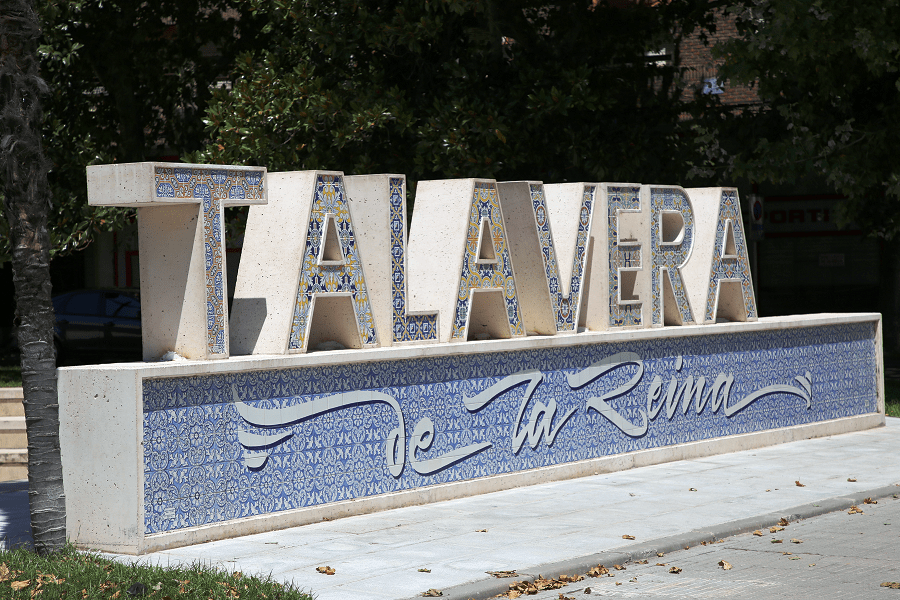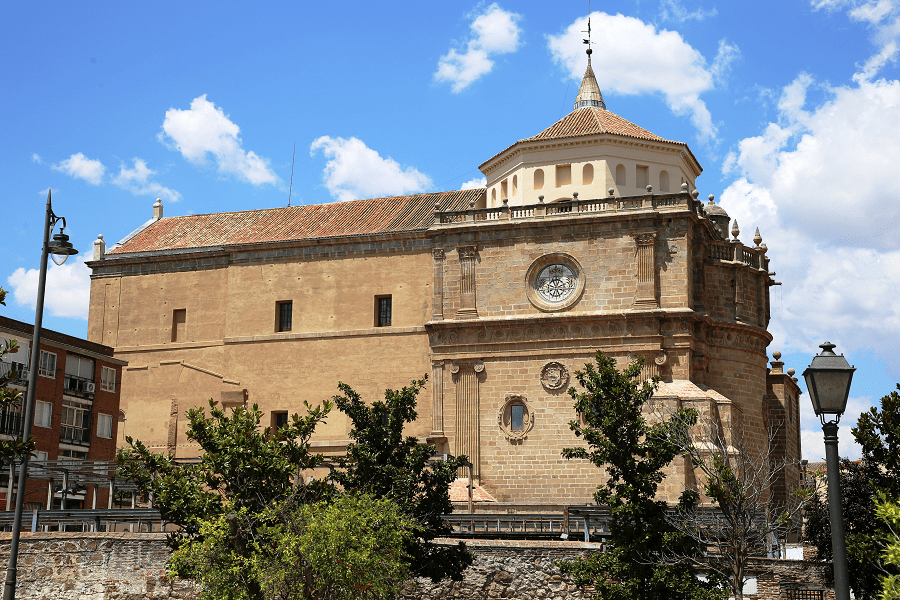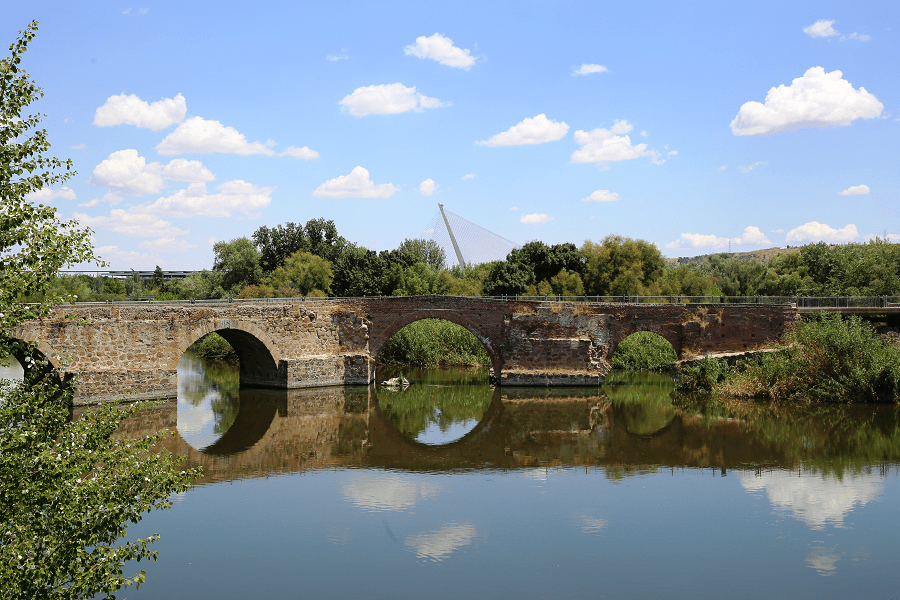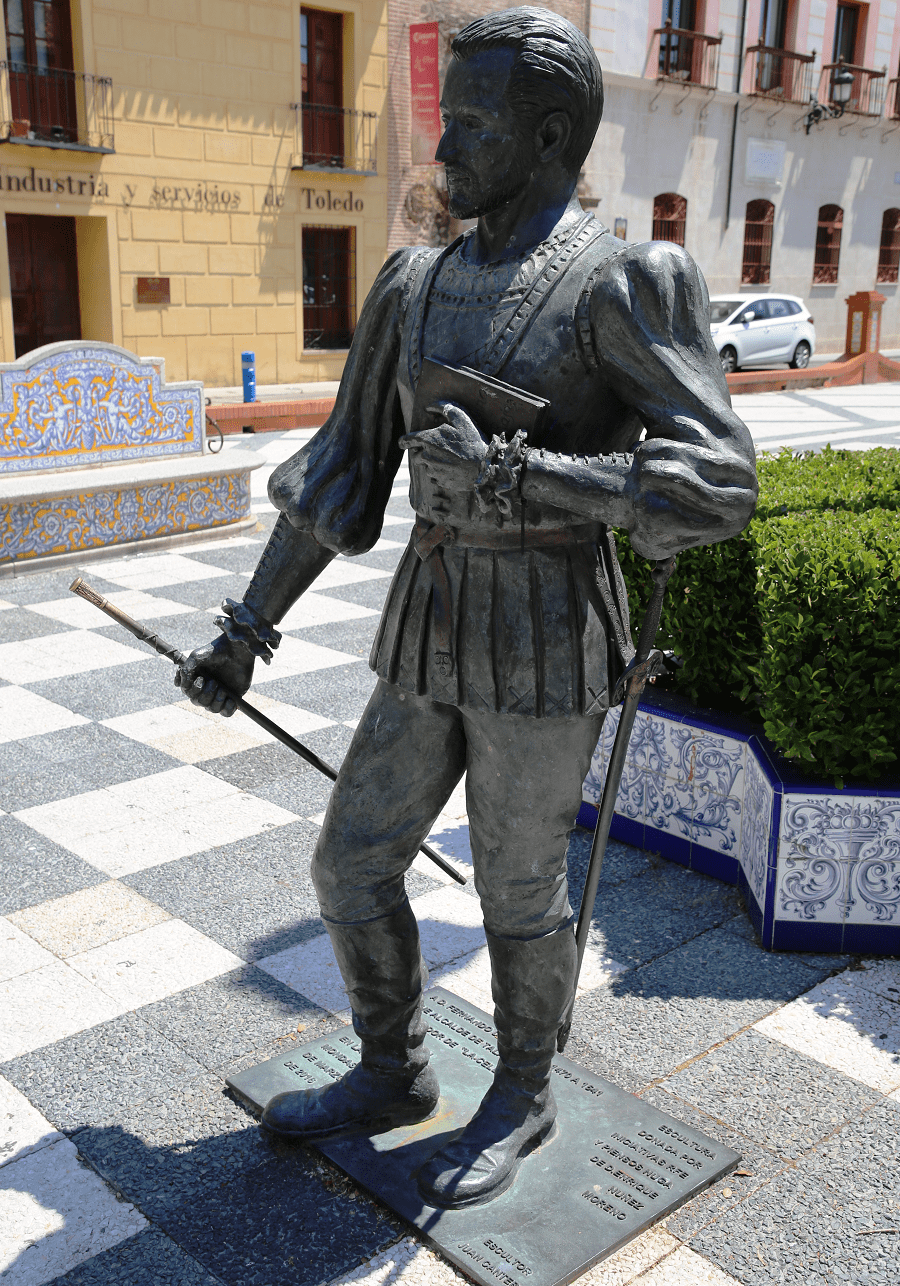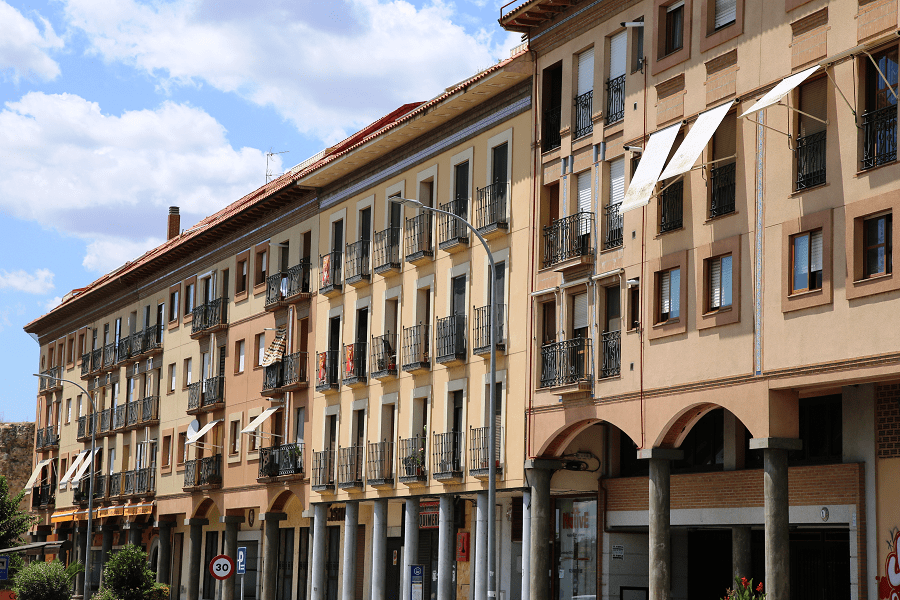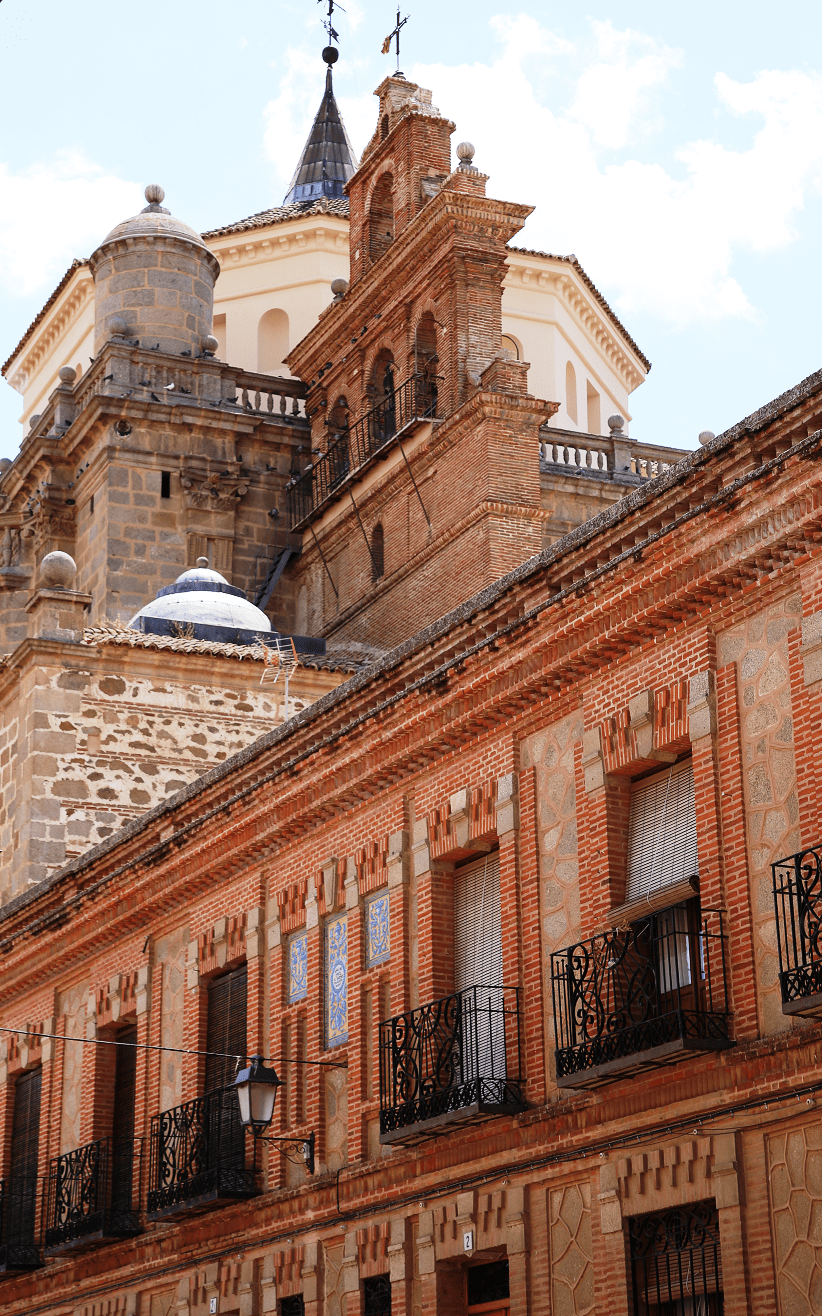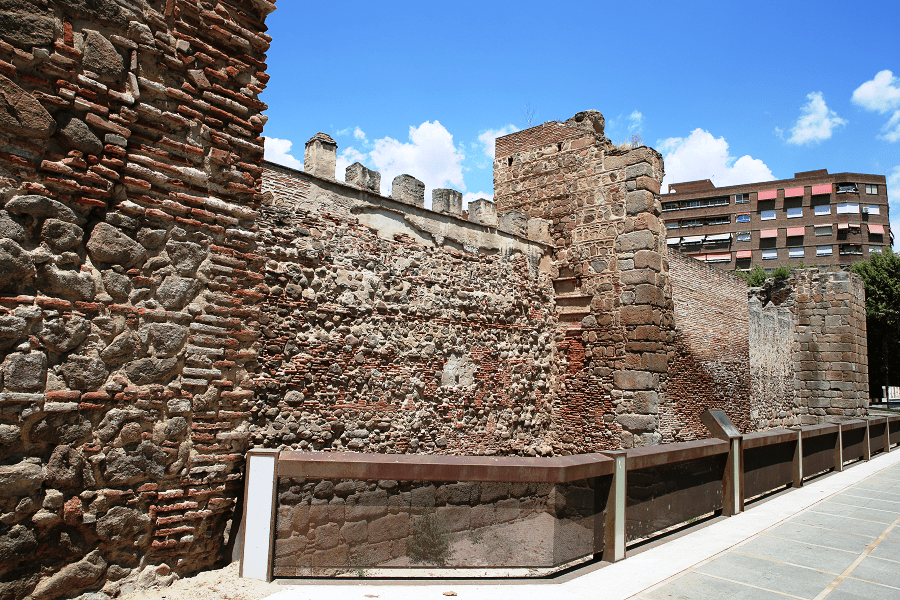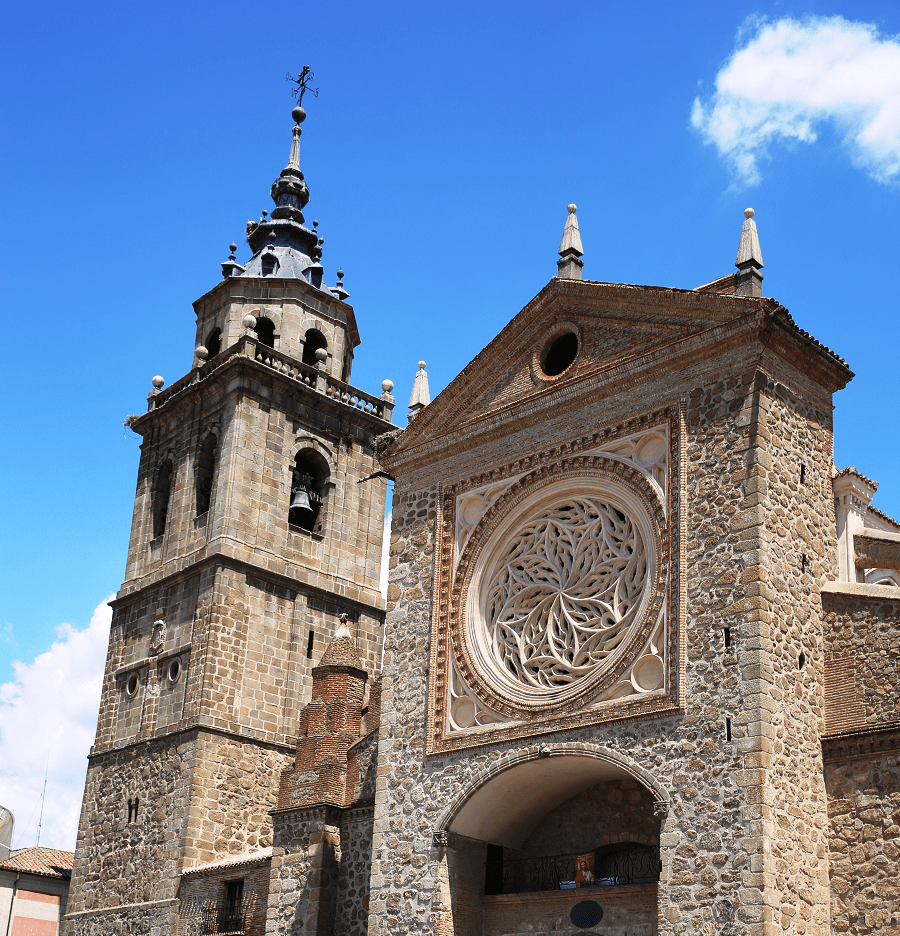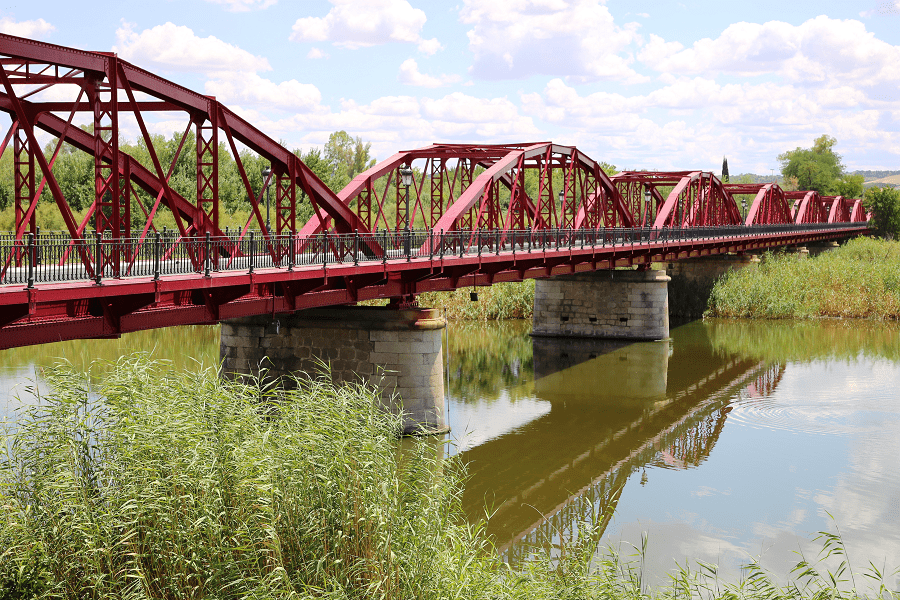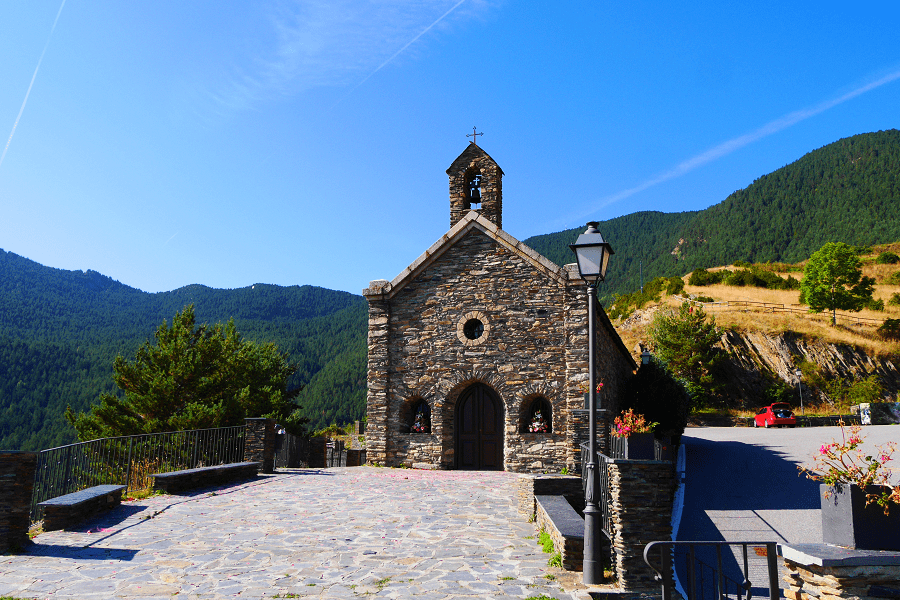Talavera de la Reina is a municipality and city in Spain, in the province of Toledo, autonomous community of Castilla-La Mancha.
The city is well known by its pottery craft. The Talavera de la Reina pottery was declared intangible cultural heritage by the UNESCO in 2019.
Tourism and main attractions
Military architecture
Huerto de San Agustín: old Arab fortress built by Abderramán III and later Christian fortress where Leonor de Guzmán, mother of Enrique II of Castile, was executed. It is currently being the object of archaeological excavation.
Wall and albarranas towers: the wall and the albarrana towers form the first walled enclosure of the city, in Carnicerías, Corredera del Cristo, Charcón, Entretorres and Ronda del Cañillo streets. Possibly Roman in origin, its current construction and appearance is Muslim and Christian, from the X-XIII centuries. It encloses the oldest neighborhood in the city, the Villa.
Wall of the second enclosure: it enclosed the New Suburbs, but only a few remains of it can be ssen: the Puerta de Seville, the Torre del Polvorín, a tower of the Puerta de Zamora and another tower in the Plaza de San Miguel.
Religious architecture
Basilica of Nuestra Señora del Prado: It was built between the 16th and 17th centuries. It is in the Renaissance and Baroque style and houses a magnificent collection of ceramics from the 16th to the 20th centuries. The main chapel is the work of Fray Lorenzo de San Nicolás. The invocation of Nuestra Señora del Prado is the patron saint of the city. Formerly a hermitage, it was declared a Minor Basilica in 1989.
Chapel of the Prison of the Holy Brotherhood: gothic style of the 15th century.
Chapel of Christ of the Merchants: opened in the 18th century in an albarrana tower of the first walled enclosure. Rococo altarpiece.
Archpriest’s House: 17th century courtyard house.
Dean’s House: built in the 16th century in Renaissance style.
Collegiate Church of Santa María la Mayor: located within the first walled enclosure, such as the parish of Santiago el Viejo and the disappeared ones of San Pedro and San Clemente, this rectangular temple with the traditional orientation of the head towards the nascent appears referred to as early as the 12th century. In a document from 1204 its prerogatives are mentioned, as it is the oldest church.
Convent of the Incarnation of the Bernardas Mothers: the church and convent complex was built between 1610 and 1625 by Fray Lorenzo de San Nicolás in a Baroque-Mudejar style with profuse use of brick. It was declared an Asset of Cultural Interest with the category of monument on May 11, 1993.
Convent of the Carmelite Mothers: XVII century. It preserves images by Juan Pascual de Mena.
Convent of San Agustín el Viejo: possibly the most representative work of Baroque by Fray Lorenzo de San Nicolás in the city. It currently houses the Ruiz de Luna Ceramic Museum.
Santo Domingo convent: it was founded in the 16th century by the Talaveran Fray García de Loaysa, then general of the Dominican order and archbishop of Seville. The church is in late Gothic style, with Renaissance features, while the cloister is clearly Renaissance. Notable are the plateresque graves of the founder and his parents, attributed to Felipe Bigarny’s workshop.
Church of San Andrés: it is located in the Puerta de Cuartos neighborhood, which coincides with the area of the so-called old suburbs. It has Mudejar coffered ceilings, 17th-century ceramics and recently discovered wall paintings.
Church of San Francisco: of this church, it is worth highlighting its ceramics of the Cross by Francisco Arroyo.
Civil architecture
Old town hall: of Renaissance style, it dates from the 16th century.
Current town hall: palatial complex from the 17th century, with a porticoed patio.
House-Palace of Calle del Sol: baroque of the 17th century.
Bakery House: example of traditional Talavera architecture.
House of the New Mills: one of the main buildings of the old Royal Silk Factory, from the 18th century.
Domus del Hospital and Roman temples of Caesarobriga: archaeological site of the I-IV centuries, can be visited in the old Hospital de la Misericordia – “Rafael Morales Cultural Center”. The two temples, dedicated to Jupiter and the imperial cult, belonged to the forum of the Roman Caesarobriga.
Mercy Hospital: founded in 1475, the current building dates from the 17th century. It currently houses the Rafael Morales Cultural Center.
Palace of the Marquis of Villatoya: built in the 15th century, it is located in the square to which it gives its name. Its architectural style is framed within Gothic art and constitutes a transition from Gothic to Renaissance. The façade has a characteristic doorway of the Toledo style, which shows a lowered arch with an ornament of balls and two pinnacles.
Museums
Ruiz de Luna Ceramic Museum: it was created by Juan Ruiz de Luna, originally it was located in the former workshops of the ceramist in the Plaza del Pan. It consists of two buildings: the old church and later the San Agustín high school, in the Baroque Talaverano style, the work of Fray Lorenzo de San Nicolás and the old Augustinian convent from the 17th century – which after the confiscation would be used as a warehouse and later as a national school – located in the old part of the city.
Ethnographic Museum: it is based in the old Lagar de San Jerónimo, a restored historic building that was part of the Santa Catalina Monastery, run by the Jerónima order, settled in the city since the 14th century. It is one of the few works of civil and industrial architecture from the 18th century that is preserved and depends on the Talavera City Council.
Cuisine and the best restaurants
There are two Michelin list restaurants in the city:
Raíces-Carlos Maldonado, Ronda de Canillo 3, 65 – 85 EUR • Creative Cuisine (One star)
El Estu Talavera, Miguel Hernández 7, 35 – 50 EUR • Traditional Cuisine
Transport and how to get to?
The city is located at the intersection of Autovía A-5 (part of European route E90) and N-502. Located on the route between Madrid and Badajoz, it has a railway station. Talavera de la Reina’s city bus system is Eborabus.
Distances to the main cities of Castilla–La Mancha:
From Toledo 56 min (88.6 km) via A-40 and A-5
From Ciudad Real 2 hr 17 min (210 km) via N-401
From Albacete 3 hr 11 min (336 km) via AP-36
From Cuenca 2 hr 34 min (267 km) via A-40
From Guadalajara 1 hr 53 min (192 km) via A-5
Main information
Area: 185 sq. km (municipality)
Coordinates: 39°58′00″N 4°50′00″O
Population: 83 663
Languages: Spanish
Currency: Euro
Visa: Schengen
Time: Central European UTC +1



